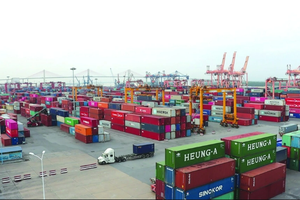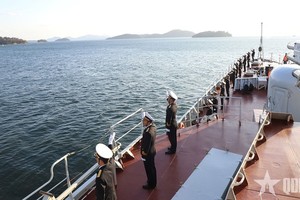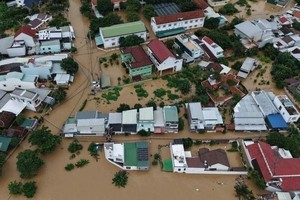Japan said Tuesday the government is on "maximum alert" over a crippled nuclear plant where highly radioactive water has halted repair work and plutonium has been found in the soil.

The earthquake and tsunami that ravaged Japan's northeast coast and left over 28,000 dead or missing also knocked out reactor cooling systems at the Fukushima plant, which has leaked radiation into the air and sea.
Prime Minister Naoto Kan conceded that the situation at the coastal atomic power station remained "unpredictable" and pledged that his government would "tackle the problem while in a state of maximum alert".
Emergency crews braving the radiation threat have used fire engines and pumps to pour thousands of tons of water onto reactors where fuel rods are assumed to have partially melted, and also topped up pools for spent fuel rods.
But the run-off from the stop-gap operation is now making it too dangerous for workers to go near several of the reactor buildings -- already charred by explosions -- to repair the cooling systems needed to stabilise the plant.
For now, however, they have no choice but to keep pumping water into the stricken reactors, said top government spokesman Yukio Edano.
If the rods are fully exposed to the air, they would rapidly heat up, melt down and spew out far greater plumes of radiation at the site, located about 250 kilometres (155 miles) northeast of Tokyo, nuclear experts fear.
"We need to stop the fuel rods from heating up and drying up," said Edano in a televised press conference. "Continuing the cooling is unavoidable... We need to prioritise injecting water."
Run-off has accumulated during the operation in the basements of the turbine rooms connected to three reactors, and filled up their adjacent tunnel systems that stop roughly 60 metres (180 feet) short of the Pacific Ocean shore.
The water out of reactor two has measured 1,000 millisieverts per hour -- four times the recently-hiked total exposure limit for emergency staff, and a level that can cause radiation sickness with nausea and vomiting in an hour.
The immediate challenge is to safely dispose of the massive amounts of contaminated water -- the tunnel near reactor two alone holds 6,000 cubic metres (212,000 cubic feet), more than two Olympic swimming pools.
Adding to the nuclear fears, embattled operator Tokyo Electric Power Co. (TEPCO) said plutonium had been detected in soil samples that were taken a week ago at five spots in the plant.
"We believe that there is a high possibility that at least two of them are directly linked with the current reactor accident," a TEPCO spokesman said, adding: "We believe the level is not serious enough to harm human health."
Nuclear safety agency spokesman Hidehiko Nishiyama said the plutonium data suggested "certain damage to fuel rods", Kyodo News reported.
The US environmental protection agency says internal exposure to plutonium "is an extremely serious health hazard" as it stays in the body for decades, exposing organs and tissue to radiation and increasing the risk of cancer.
Fears have grown in Japan over food and water safety. Vegetable and dairy shipments from four prefectures have been halted, and parents were at one stage last week warned not to use Tokyo drinking water for infant formula.
Seawater close to the plant earlier contained iodine-131 as high as 1,850 times the legal limit, but levels fell later and officials say tidal dispersal means there is no immediate health threat from seafood.
Japan's government has evacuated hundreds of thousands of people from within 20 kilometres of the plant, and more recently encouraged those remaining within 30 kilometres to also leave.
Environmental watchdog Greenpeace, which has taken its own measurements in the town of Iitate, 40 km from the plant, urged the government to evacuate the town, especially the most at-risk children and pregnant women.
"Remaining in Iitate for just a few days could mean receiving the maximum permissible annual dose of radiation," Greenpeace radiation expert Jan van der Putte said.
























